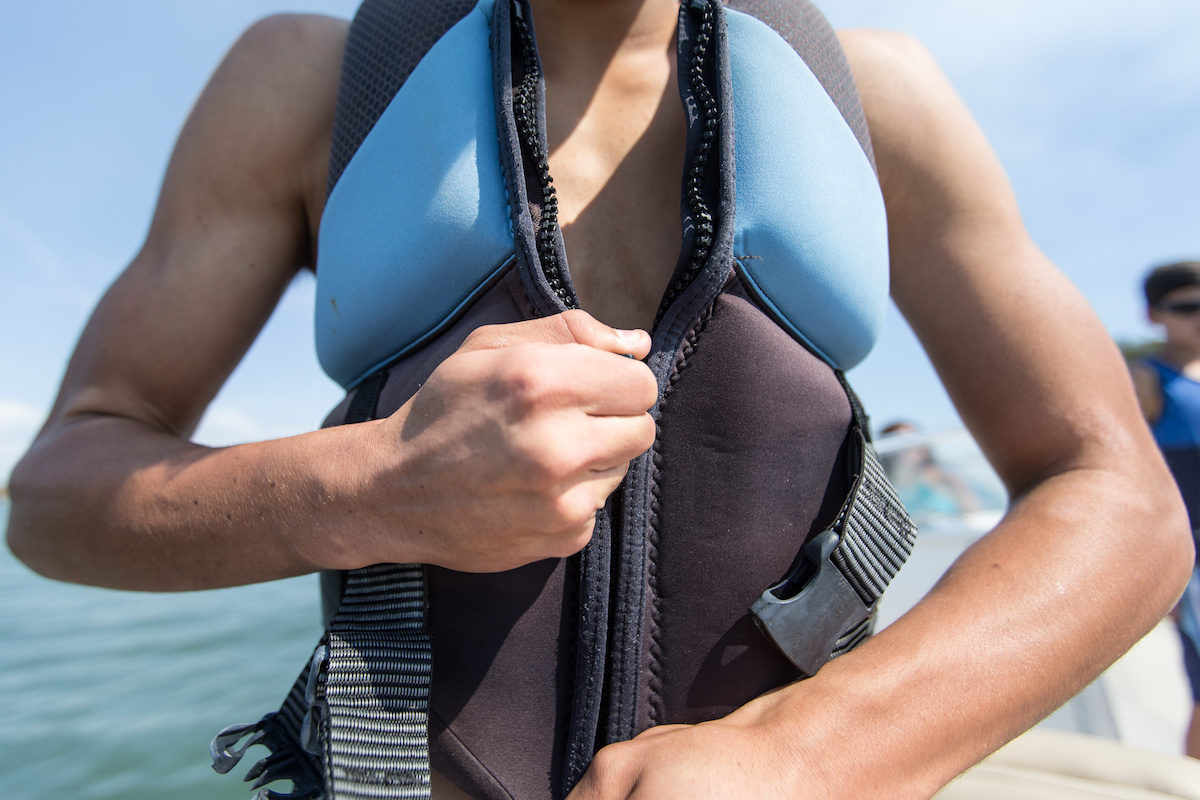Every boater knows that life jackets are essential boating gear. However, many boaters are hesitant to wash them because they fear compromising their quality. If this sounds familiar, don't fret. In this post, we'll explain how to clean boat life jackets (the right way).
How to Clean Life Jackets
Have your life jackets gotten stained, moldy, or downright dirty? Lucky for you, cleaning them is a breeze. All you have to do is follow these simple steps:
1. Prep the Scene
The first step to cleaning life jackets is preparing the scene. First, we recommend laying a tarp on the ground. Next, you should fill a bucket with two tablespoons of liquid laundry detergent and cool water.
2. Scrub the Jackets
The next step is to place the life jackets – straps and all – on top of the tarp. Scrub the jackets' surfaces using the detergent-water mixture and a soft brush.
If the stains aren't coming out, you can apply a single drop of detergent (NOT bleach) directly on top of them. Then, gently scrub the stains with the brush. Once you're finished, let the jackets sit for 15 minutes before rinsing.
3. Spot-Clean Mold and Mildew
If your life jackets have mold or mildew on them, you need to move them outside. Clear off any visible spores, then wet the fabric and scrub as suggested. If the mildew/mold stains persist, add about ¼ cup of oxygen-based bleach to the cleaning solution.
4. Rinse the Jackets
As we mentioned, you should let the life jackets sit for about 15 minutes before rinsing. After that time has passed, rinse your jacket with clean water, either from a hose or bucket. Smooth the fabric to ensure you've gotten all the crevices, then hang them up to dry.
5. Store the Life Jackets
Once your life vests are completely dried, you'll need to check for any puckering or shrinkage. If they're clear, stow your jackets in a cool, dry, and dark place. Typically, we'd recommend storing them in a small space on your boat or inside a plastic bin in your garage.
Tips for Cleaning Life Jackets
Want to ensure your life jacket cleaning endeavors are smooth as can be? Here are some tips you should follow every time you clean your jackets:
- Always air dry: Never use a heated device or machine to dry your life jackets! Instead, dry them in a well-ventilated space out of immediate sunlight.
- Use a rotating fan: If drying your jackets indoors, use a rotating fan to speed up the process and prevent mildew.
- Rinse after use: To keep your jackets in tip-top shape, we recommend rinsing them after each use. This is especially important if your jackets are being used in saltwater.
- Clean right away: If your jackets get severely stained during use (think: food, drinks, mud, sunscreen, etc.), you should clean them as soon as you get home. Scrub with soap (see above) immediately to avoid those stains from developing further and corroding the jackets.
Read Next: How to Clean a Boat: Boat Cleaning Basics
What Not to Do When Cleaning Life Jackets
Because you don't want to risk damaging them, cleaning your life jackets can be tricky. Here are some things to keep in mind:
- Don't machine-wash or dry-clean your lifejackets. The agitation and heat will break down the foam, which renders the jacket useless.
- Don't dry your life jacket with a heat source (like a clothes dryer). Always hang the jacket to dry.
- Veer away from strong or heavily bleach-based detergents. Chlorine bleach can break down the foam and the jacket itself.
- Avoid industrial cleaning agents like gasoline, paint thinner, or acetone. These will dissolve the jacket's interior foam and weaken its exterior fabric.
- Don't store heavy objects on top of life jackets, as this can crush the floatation material and lessen their performance.
When Should You Clean Your Life Jackets?
We always recommend cleaning your jackets immediately after dirtying them (food or sunscreen stains, for example). However, at the very least, you should be cleaning them monthly. We also recommend cleaning your life jackets at the beginning and end of each boating season – as you put them into/take them out of storage.
Mold, mildew, and other contaminants can break down the jackets' materials over time. Therefore, life jackets should be regularly cleaned to maintain their quality. Not only that, but cleaning forces you to check your jackets for rips, tears, and other signs of replacement.
Final Thoughts
Having functioning life jackets is necessary for a safe boating environment. If you weren't sure before, we hope this blog post answers all your questions about how to clean boat life jackets.
If you're looking for more boating tips, tricks, hacks, and how-to guides, we're here to help. Discover Boating can help you find your ideal boat, and we have plenty of resources to guide you along the way. Check out our latest boating blog posts to see what we mean!


